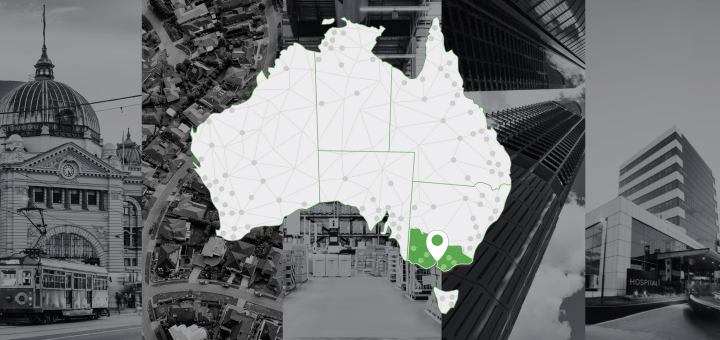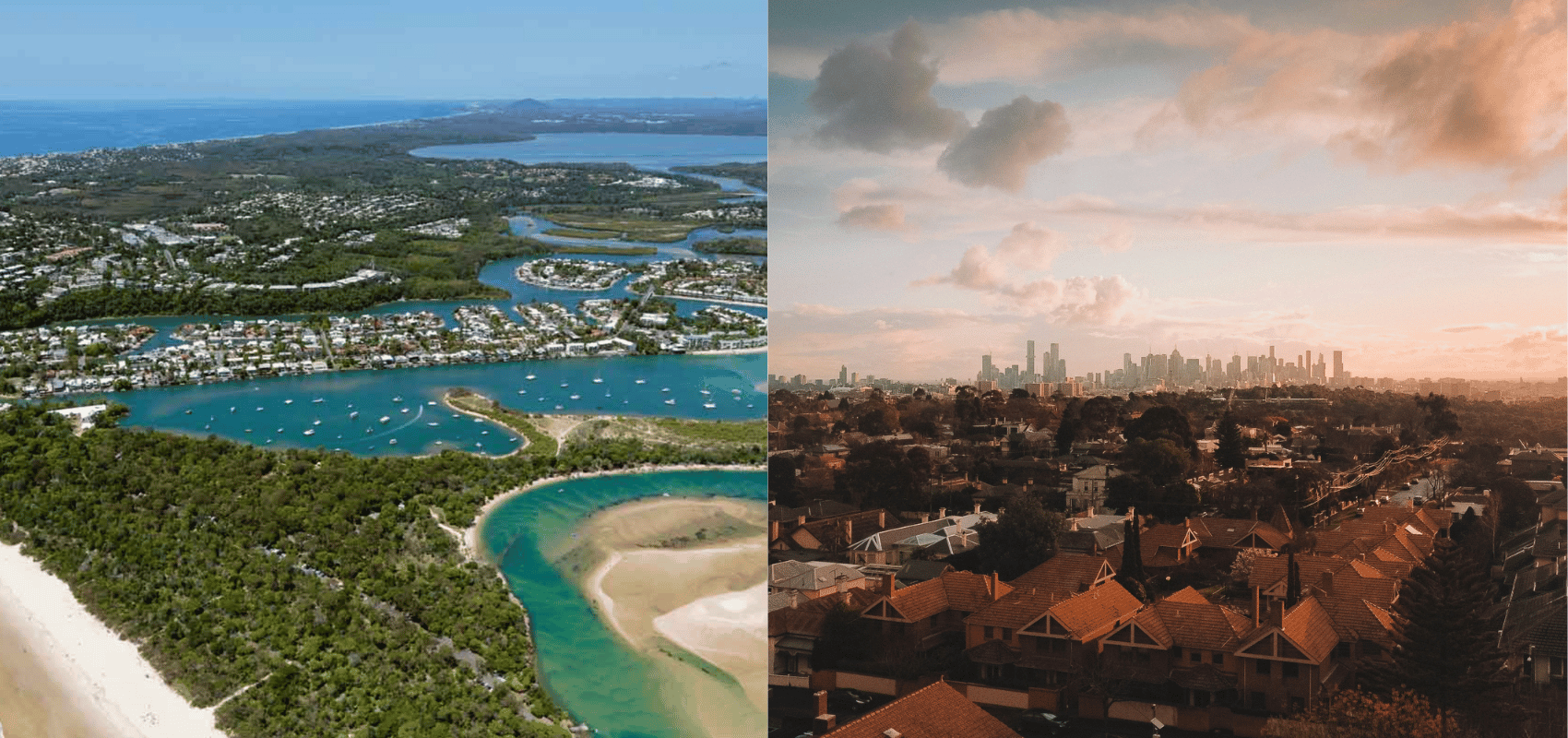This week, Keenan and Glenn are heading north to attend the Developing Northern Australia conference in Karratha, where they’ll be speaking with local policymakers, economic development professionals and a cross-section of industry representatives from Northern Australia about the economic and demographic challenges (and opportunities) in the region. In this piece, Keenan shares the recent history of boom-and-bust in the North.
See more from Keenan, including recent presentations such as ‘Understanding economic change across Queensland’ on his Meet the team page.
I recently had the chance to explore the changing economic conditions facing the top end of Australia, or more specifically the City of Darwin (LGA).
It is one of those strange places in Australia – on the surface, it appears very isolated but is actually right next door to hundreds of millions of people in Indonesia, East Timor and PNG. In fact, it is much closer to Jakarta than Canberra.
The city and it’s economy have both experienced substantial shocks over the last hundred years from both natural (Cyclone Tracy) and man-made (WWII) forces. The City of Darwin today is home to almost 85,000 residents with another 65,000 in the Greater Darwin area. Its economy is built around industries servicing this resident base (health, education) public sector employment (bureaucrats and Defence workers), tourism (the city serves as the gateway to the Northern territories many national parks) and a base for workers connected to onshore and offshore mining projects.
The boom
Levels of economic, job and population growth in Darwin fluctuate considerably with the trajectory of major resource projects. Case in point is the recent Ichthys Gas Project developed by Inpex, which is one of the largest LNG projects in the world and consists of three major facilities:
- An offshore central processing facility in the Browse Basin, located 200 kilometres off the northern coast of Western Australia.
- an 889 km subsea pipeline, and
- an onshore liquefaction plant located at Bladin Point, near Darwin.
When the project was first announced it was apparently hailed by the Government as a ‘gamechanger’, underpinning the economy for decades to come. The construction phase certainly had a large impact with development commencing in 2012 and at its peak in 2016 the project employed almost 8,000 people. It is estimated that a quarter of all positions on the project in 2016 were filled by City of Darwin residents, 34% by other areas in the NT and a substantial 41% from interstate/overseas (2016 census data). Boosting the impact on the City of Darwin was the fact 5-10% of workers (interstate residents) chose to reside in the City while working at Bladin Point.
The bust
There is no doubt that this project brought a substantial windfall to local Darwin businesses during the period of construction. However, the transition from construction to operation has highlighted the weaknesses in relying on such temporal economic boosts. Job requirements at Bladin Point have decreased substantially and it is estimated that only a few hundred jobs are required now to maintain operations.The transition has also seen a decrease in local business numbers as supply chain impacts roll out. Since 2016, the City has seen a decline of almost 180 businesses in the Construction Sector. Demand for commercial space in the city is also low. In January 2019, Darwin had the highest office vacancy rate out of all Australian cities.
As the work dried up, FIFO workers began exiting Darwin. The City added almost 7,000 people between June 2011 and June 2016. In the most recent year to June 2018, it lost over 1,300. This exodus has impacted other flow on service industries. In the two years since mid-2016, jobs change in mining and construction has been negative and jobs growth in retail, hospitality and recreation areas has been more than halved. The unemployment rate in Darwin increased in the two years to the end of 2018, at the same time it was falling in the rest of the country.
The changing population growth levels have influenced housing affordability over this period considerably. After a large boom where the median price increased by $100k in two years, prices are now actually below 2011 levels. Rents have followed the same trajectory.
Impacts on tourism
One of the interesting impacts of the project boom was its influence on visitation to the NT. Domestic visitation to Darwin increased to 2016 but has been falling since. International visitation has been declining the whole time, except nights stayed has risen. This appears to be because of the change in visitor type. Between 2013 and 2016 the estimated nights for international visitors travelling for employment reasons (connected to skilled migration visas) doubled. More and more visitors were coming to work rather than play.
Anecdotal evidence from NT suggests workers from the project were taking up hotel rooms and flights that would normally be open for tourists. The project’s demand led to higher costs that made Darwin much less attractive than other destinations. The workers have left, but the market hasn’t yet returned.
What now?
The City of Darwin and NT Government are well aware of the challenges facing the region. Last year they announced a $103m tourism stimulus package and they are still progressing the $200 million Darwin City Deal with the Australian Government. Other projects such as major upgrades at the City’s defence bases continue to reinforce existing specialisations. The City Deal holds the most promise in moving Darwin towards a position of sustainable economic development. It is a 10-year plan for the Darwin City Centre which involves a number of economic and social projects that include an expanded city campus for Charles Darwin University, a new art gallery and CSIRO ‘urban living lab’.
Lessons
While there is no question that regions in close proximity to natural resources will continue to try and attract and enable the development of major projects in this area, they should not be considered as some panacea for the whole economy. Booms and busts should be planned for to ensure they don’t crowd out other activities and to ensure the ‘hype’ of big developments don’t create the illusion that the good times will never end.
As local economies in other states such as WA and QLD are now aware, the boom period should be used to address long-standing problems and a strong pipeline of investment in other sectors is required to smooth transition of businesses and jobs post-construction.
Now, if only Australia had the appetite for some decent resource tax policies like other countries, we might be getting somewhere..









